Robins have been living alongside humans for hundreds of years.
Our gardens can provide an ideal habitat for them To encourage robins nesting in your garden:
- Provide an open-fronted nesting box, put it in a sheltered position, well hidden, 3-4 feet above the ground.
- Put plenty of extra food on the ground feeder or bird table. Fat balls and mealworms are good.
- Don’t disturb robins by looking for their nests.
Robins are one of our best-loved garden birds. They brighten up our winters with their song and star on our Christmas cards.
So it’s lovely to get a pair of nesting in your garden. In this article, we are going to look at robins nesting and breeding habits and how to make your garden the perfect place for them to raise a family.

How to Encourage Robins Nesting
There are things you can do to encourage and help robins at each stage of the nesting and breeding season. Let’s take a look at each step.
When do Robins Nest?
Robins start to choose partners for breeding and look for nesting sites in January.
Nest building starts in March and will take around 4 days.
But this is just the first round of the year. Robins generally have 2 or 3 broods in a year and will build a fresh nest for each one. So nesting can go on into early July.
Encourage them by making sure your nesting boxes are cleaned out and ready to go by Christmas. It’s illegal to clean out a nest box in the summer months in the UK, so your box will only be used once each year.
Where do Robins Nest?
Robins prefer a nesting site on or close to the ground; on a bank, in tree roots or hedges and climbing plants.
They like to be out of direct sunlight and rain, and well hidden from predators.
Around humans, they can choose all sorts of strange sites like watering cans, old boots and even the wheel-arches of cars.

They do not like to be disturbed. If they think a nest has been discovered they will easily abandon it and start the whole process again.
Encourage robins nesting by making sure your nesting boxes are placed in quite low sites. 3 or 4 feet off the ground is ideal, 6 feet is the highest a robin will be comfortable. Place boxes in amongst climbing plants hedges.
Be sure your boxes are out of direct sunlight and face north or east to be protected from our wet westerly winds. Try to mount the boxes so they are angled slightly forward. This way any rain that does get in can run out and keep the nest dry.
If you think robins are nesting in your garden stay away as much as you can and leave them in peace to build.
What is a Robin’s Nest Like?
The female builds the nest with the male bringing her extra food whilst she’s working.
The nest is cup-shaped, at least 4 inches across. It is generally made with leaves and moss and lined with hair and maybe a couple of feathers.
Encourage robins nesting by helping with nesting materials. Save the hairs from your own brush, or your pets brush and leave them in the garden. Choose the right nesting box. An open fronted wooden box is right for robins.
When Do Robins Lay Their Eggs?
Robins start to lay their eggs in April.
The female lays one egg each day, in the mornings. There are usually 5 or 6 eggs in a clutch.
The male keeps feeding the female as she is laying. The extra food is essential as an average clutch of eggs will weigh almost as much as the bird that produces them. Making all that egg takes up an awful lot of energy.
Encourage robins nesting by making sure you offer plenty of extra food at this time. Fat balls and suet products, live mealworms and high-quality seed mix are all welcome. Remember, robins will rarely take food from a hanging feeder, so feed them on the ground or the bird table.
When Do Robins’ Eggs Hatch?
A female robin will sit on eggs for around 13 days before they hatch. The first clutch of the year usually hatches in early May.
The female rarely leaves the nest during this time. So continuing to offer extra food will help them.
What do Baby Robins Eat?
Baby robins are born with no feathers and blind. They open their eyes after about 5 days and feathers start to appear after about a week. They are fully feathered and ready to “fledge” or leave the nest, after 14 days.
Both parents feed the baby birds in the nest and may up to 100 feeding trips in one day. For the first few days, the chicks eat regurgitated food that the adults have already partly digested. Then they will move on to broken bits of insects and worms, and finally will be offered whole worms or insects.
A robin chick can eat up to 14 feet of worms whilst still in the nest. So the parents are kept very busy.
The chicks are ready to leave the nest at 2 weeks old. But that’s not the end of the parents responsibilities. They will continue to feed and look after the chicks for up to 3 weeks more. With the female eventually going off to build a new nest and leaving the chicks in the care of the male.
This is a very vulnerable time for the chicks. They still don’t fly very well and they haven’t learnt much about the dangers of their world and how to avoid them.
Encourage robins nesting at this stage by digging over your garden to turn up some tasty worms. Robins and especially chicks, feed on the ground, so when you are putting food out for them be sure to put it a good 2 metres away from undergrowth, so they can keep a watch for predators.
If you have a cat, keep a close eye on it and consider fitting its collar with a bell, at least for the mating season.
Conclusion: Making a Home for Robins in Your Garden
Robins have lived alongside humans for many hundreds of years. Our gardens provide a habitat that is familiar to them and can offer them everything they need to survive and thrive.
If you follow the steps above you should be able to encourage robins to nest in your garden. Be patient though: don’t expect them to move in straight away. It may take a year or two for them to choose your garden as a nesting site.
For more information on British birds visit the RSPB website.
We hope you’ve enjoyed this post. If you have any questions or suggestions we would love to hear from you. Please leave us a comment below.

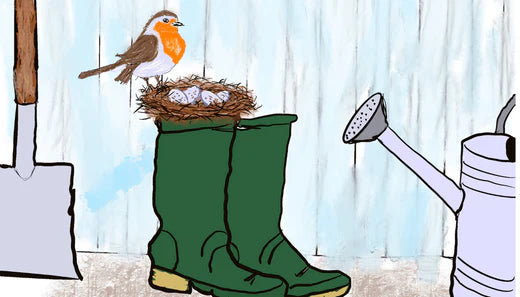
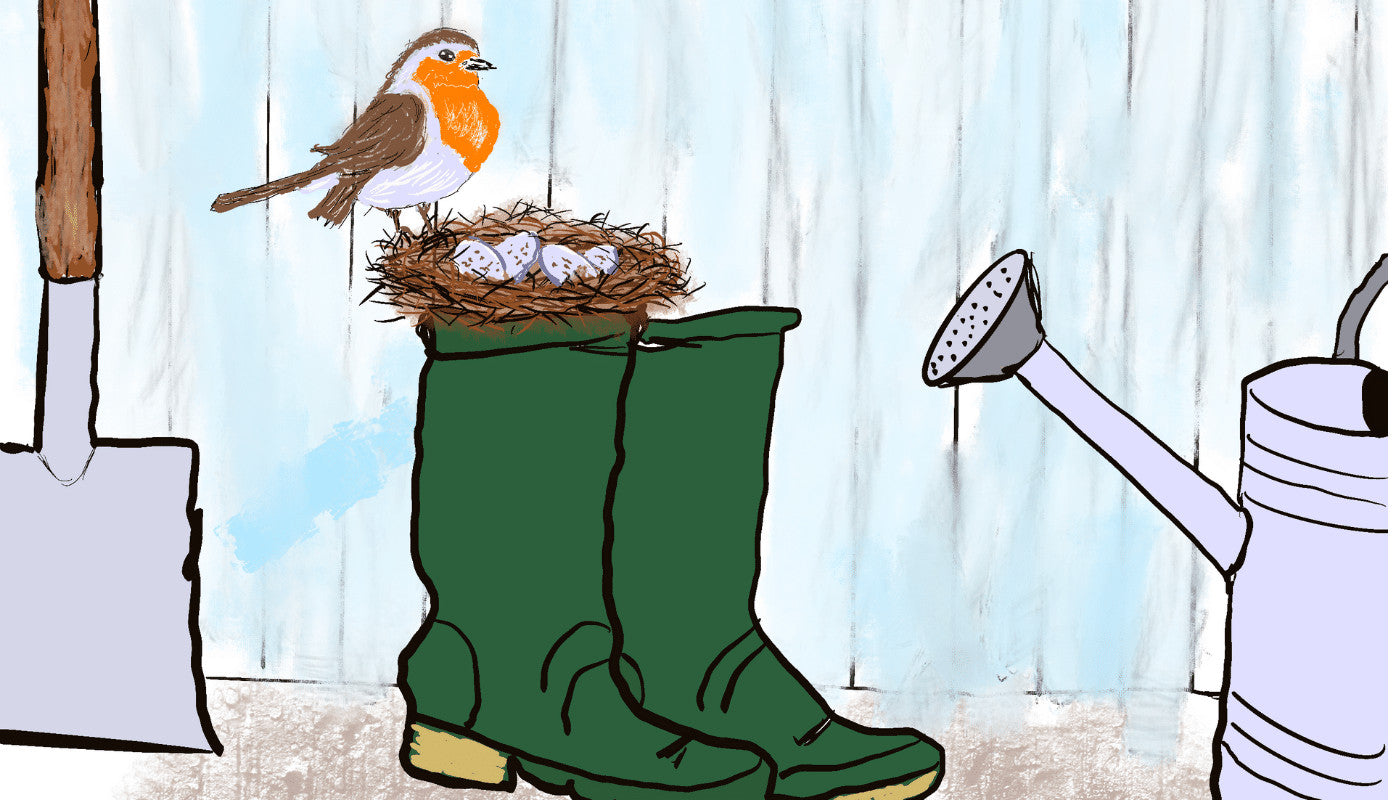
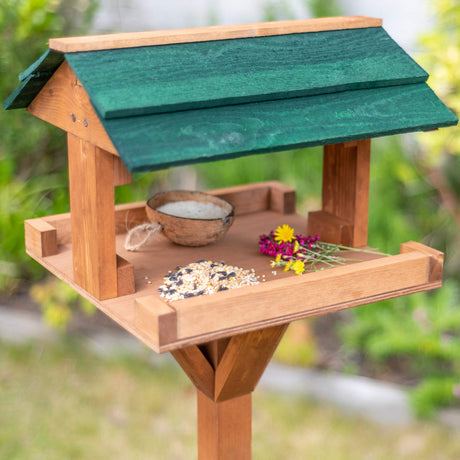
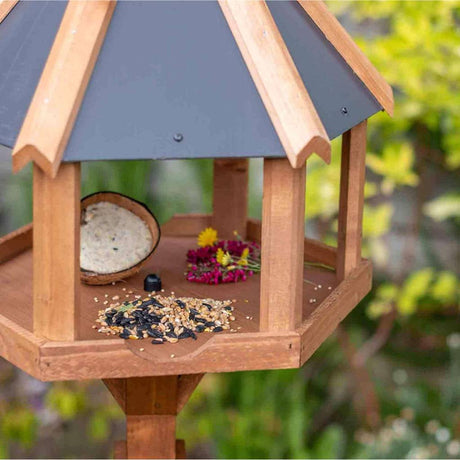
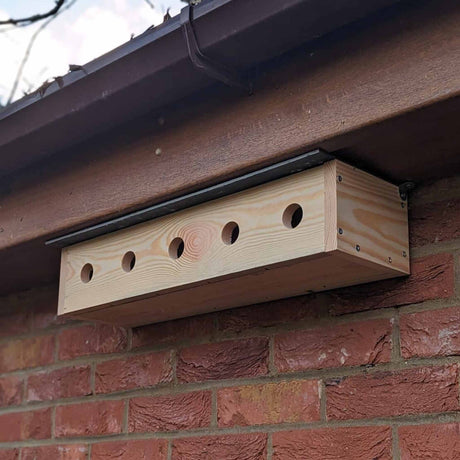
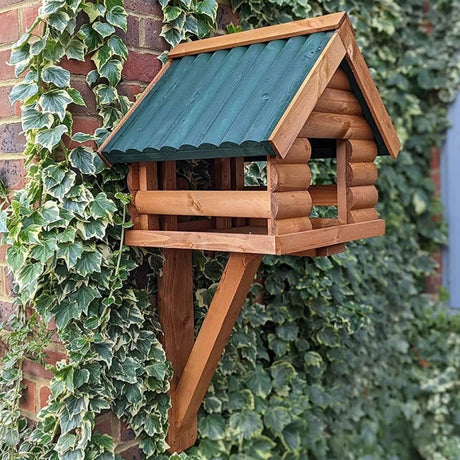
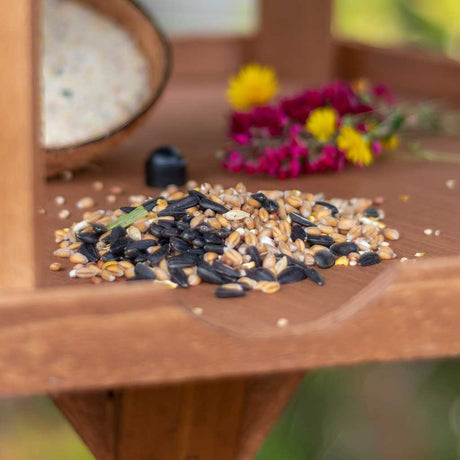


14 comments
I read recently that pet flea treatment skin drops can be dangerous/lethal to nesting birds/chicks( as they use pet-hair often to line their nests) – studies have been done proving that it is better to use tablets for flea treatment as opposed to skin drops – definitely something we should be aware of
I lost my cat late last year but I’ve been rewarded with nest building robins in my enclosed garden for the first time. I read in the comments if you see a robin it’s someone who has passed coming to say hello. I’d like to think that applies to animals too.
Great article very helpful, Have a pair of robins busy making a nest in the box we put up last year, (January) hoping they decide to use it. It’s tucked in our climbing plants on an out house, very close to our house. They sit and look in through the window if I’m late in the morning taking food out for them.
Love to install a Robin’s nest, but if located 3’ or 4’ off the ground, as advised, extremely vulnerable to neighbours’ cats, sad to say!
I’ve got Robin in my garden nesting in my hose real on wall for the first time
Robbins have built acnest and it is pretty high up. At least 20 feet straight down. She has just started incubating. Should they be ok??
I have a male Robin building a nest in my wheelie bin! I had cut back a shrub and the bin lid is ajar.. RSPB states males don’t build the nest, haven’t seen a female, perhaps he’s hoping?
I have 2 Robins in my garden one of them has been bringing leaves into box for 8 days and still doing it why
Do robins come to the same garden Year after year?
Hi my Robin has hatched her babies and left the nest but there are 2 eggs that did not hatch. What do I do now as the mother does not visit the nest now. Thank you Stuart
Robins in my garden appear to have built two nests about 15 feet apart, one in some ivy and one in a hedge. Is this usual?
My friend has a Robins nest in his shed & the male will sit on his work bench & sing to him.
Someone told me that if you see a robin it is a sigh of a loved one vistin you to show you that they are ok after there death
Just seen robins taking nesting material into our bird box for the first time in 5 years … so excited. Just brushed the dog and left his hair on the floor to see if they will use it ?
I’ve got a Robin’s nest in my garden for the 1st time it’s in my garden house pipe. I’m going to make some nest boxes know and hopefully encourage more .